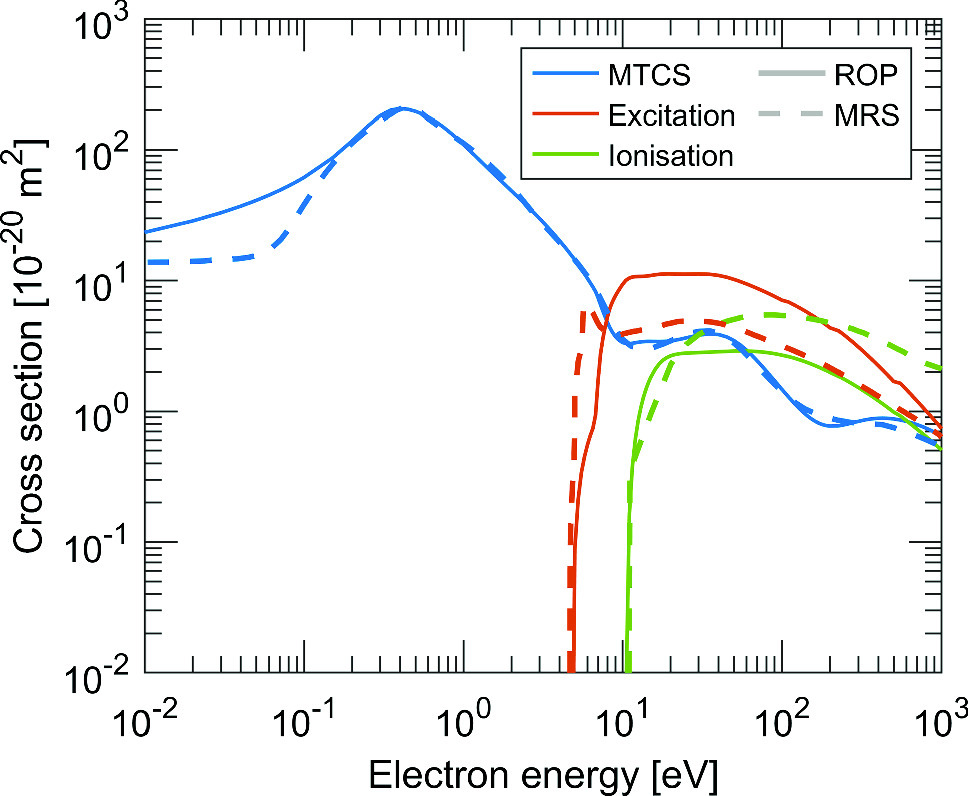https://doi.org/10.1140/epjd/s10053-023-00793-4
Regular Article - Atomic and Molecular Collisions
Integral cross sections and transport properties for electron-mercury scattering over a wide energy range (0.001–1000 eV) and reduced electric field range (0.01–1000 Td)
1
Research School of Physics, Australian National University, 0200, Canberra, ACT, Australia
2
College of Science and Engineering, James Cook University, 4810, Townsville, QLD, Australia
Received:
13
October
2023
Accepted:
11
December
2023
Published online:
22
December
2023
We report calculations for electron-mercury scattering using a complex relativistic optical potential method. The energy range of this study is 0.001–1000 eV, with results for the elastic (and momentum-transfer) cross section, summed discrete electronic-state integral excitation cross sections and electron-impact ionization cross sections being presented. Here we obtain our cross sections from a single theoretical relativistic calculation. Since mercury is a heavy element, a relativistic treatment is very desirable. These ab initio calculations are compared to the cross section set recommended by Mirić et al. (Eur Phys J D 71:1, 2017), which were developed from a variety of experimental and theoretical sources. Significant differences are noted between the total excitation and ionization cross sections, and the low-energy momentum-transfer cross section. Electron transport coefficients are subsequently calculated for reduced electric fields ranging from 0.01 to 1000 Td, using a multiterm solution of Boltzmann’s equation. The results were compared against those calculated with the Mirić et al. set, and experimental measurements where possible. Overall, there is good agreement demonstrated between both cross section sets and experiment. The drift and diffusion coefficients calculated with the ab initio cross section set were generally lower than those calculated with the Mirić et al. set, at low reduced field strengths  Td, and vice versa for reduced fields strengths
Td, and vice versa for reduced fields strengths  Td. The ionisation coefficient calculated here was smaller than that of Mirić et al. and the experimental measurements over the full range of electric fields investigated.
Td. The ionisation coefficient calculated here was smaller than that of Mirić et al. and the experimental measurements over the full range of electric fields investigated.
Copyright comment Springer Nature or its licensor (e.g. a society or other partner) holds exclusive rights to this article under a publishing agreement with the author(s) or other rightsholder(s); author self-archiving of the accepted manuscript version of this article is solely governed by the terms of such publishing agreement and applicable law.
© The Author(s), under exclusive licence to EDP Sciences, SIF and Springer-Verlag GmbH Germany, part of Springer Nature 2023. Springer Nature or its licensor (e.g. a society or other partner) holds exclusive rights to this article under a publishing agreement with the author(s) or other rightsholder(s); author self-archiving of the accepted manuscript version of this article is solely governed by the terms of such publishing agreement and applicable law.





